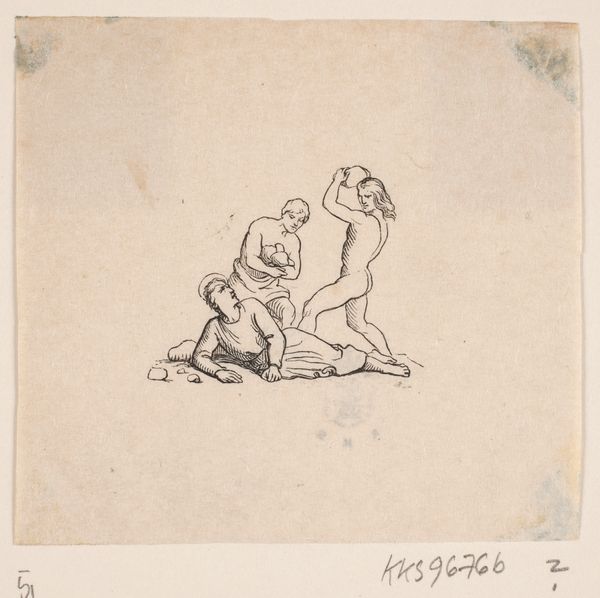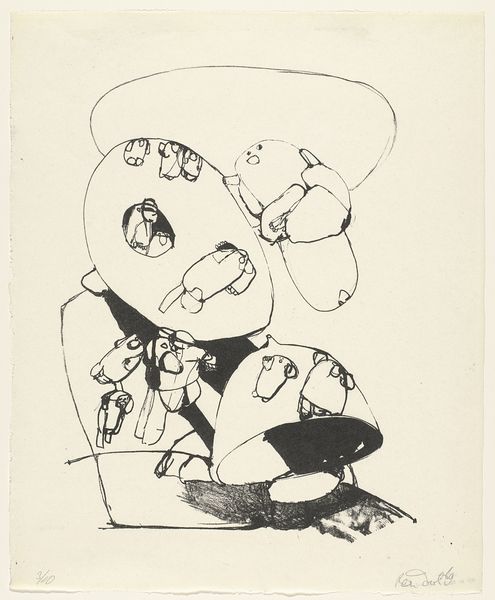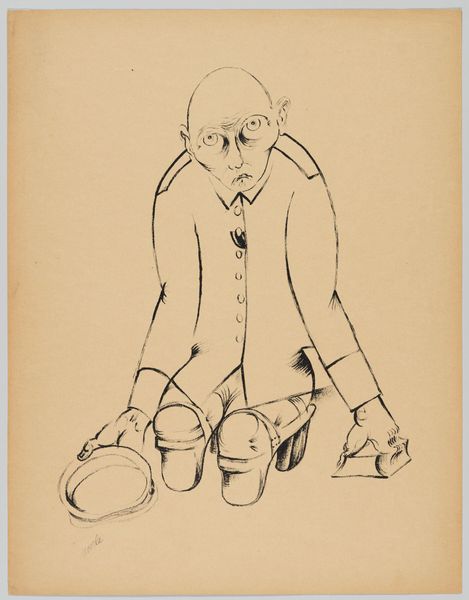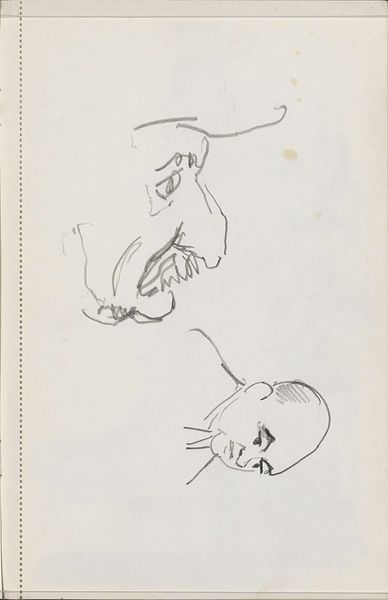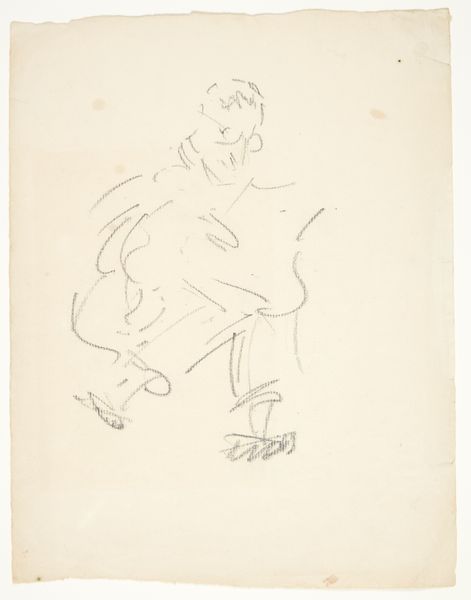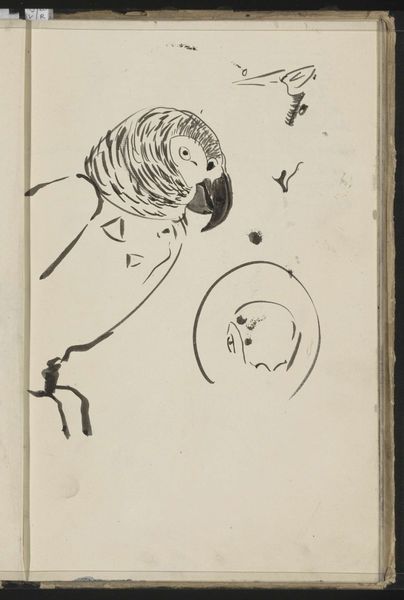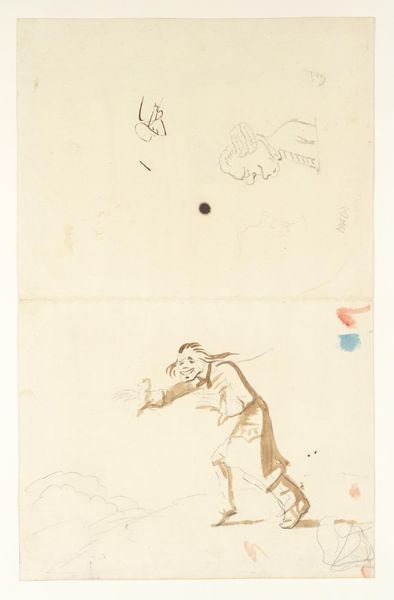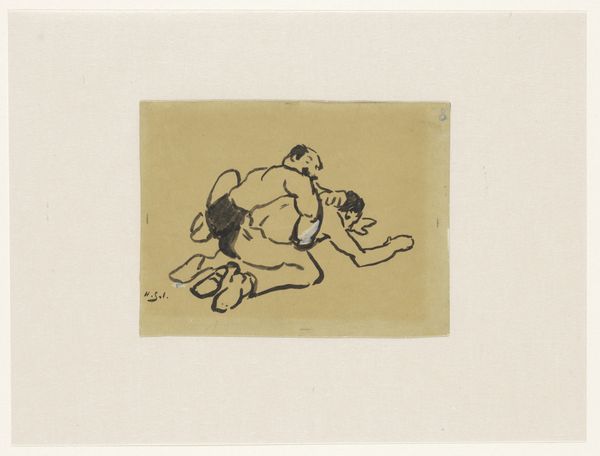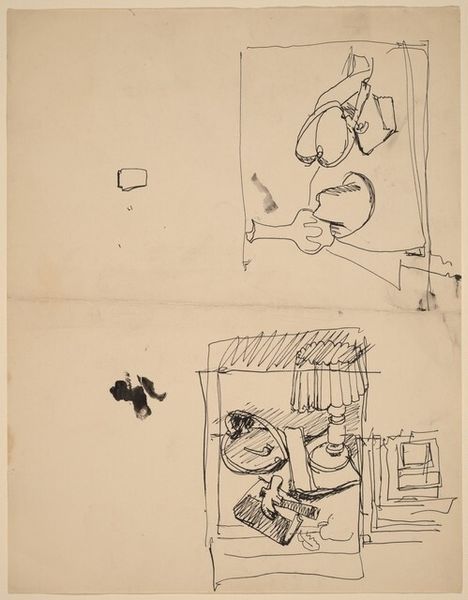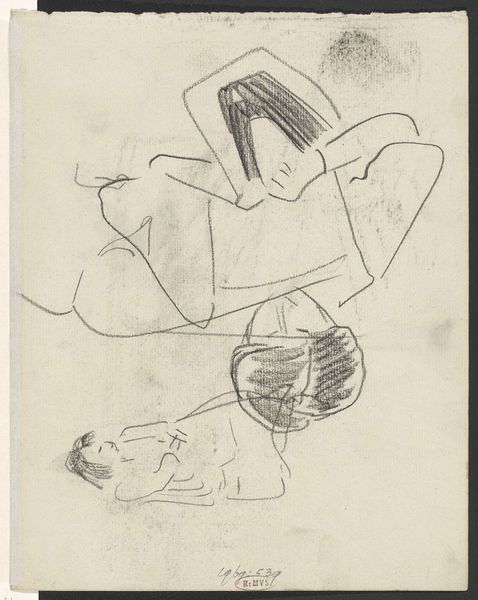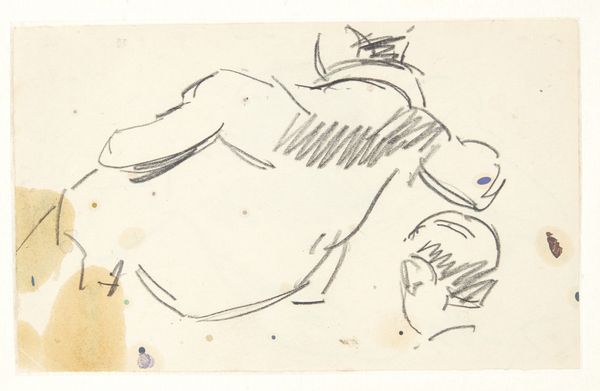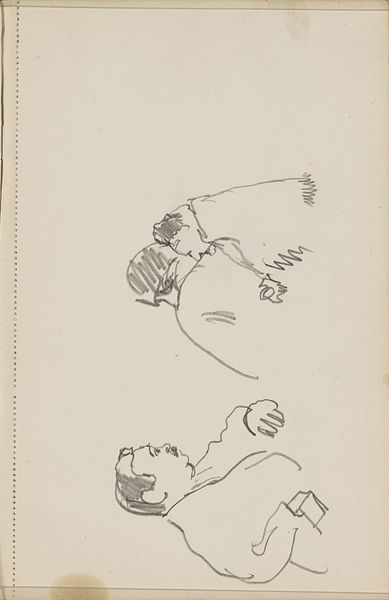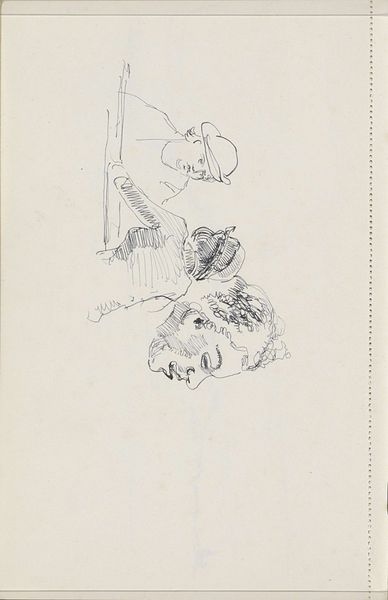
drawing, ink, pen
#
drawing
#
comic strip sketch
#
quirky illustration
#
pen illustration
#
asian-art
#
cartoon sketch
#
figuration
#
personal sketchbook
#
ink
#
ink drawing experimentation
#
pen-ink sketch
#
sketchbook drawing
#
pen
#
storyboard and sketchbook work
#
sketchbook art
Dimensions: height 162 mm, width 148 mm
Copyright: Rijks Museum: Open Domain
Curator: Looking at this artwork, I immediately sense a certain quiet contemplation. What’s your initial impression? Editor: Well, I am intrigued. It's a pen and ink drawing, probably dating sometime between 1875 and 1925, entitled “Ling-Ti-Wa sitting next to a fish bowl.” The starkness of the ink really makes the figure pop. It has this lovely, slightly melancholic air. What pulls you in? Curator: For me, it’s the visual narrative at play, a tension born from a moment of observation. I am especially interested in how this drawing may situate the figure of Ling-Ti-Wa within broader conversations about representation, gender, and perhaps even orientalism within its historical context. What cultural symbolism are you picking up? Editor: Beyond the obvious Asian-inspired setting implied through the character’s clothing and the presence of a fishbowl, the light post lamp with orientalist patterns evoke traditional forms of lighting in Asian households or gardens. It’s a familiar image, simplified but effective. The subject seems to be a kind of character, perhaps a figure of fantasy. What sort of conversations do you envision it within? Curator: It is tempting to draw connections between the depiction of Ling-Ti-Wa and Western perceptions of Asian identity. This image opens discussions about exoticism, representation, and the gaze. As this looks like a quick drawing, how was this imagery circulated or used at the time? Was it simply a personal drawing? This brings me to think about how Asian individuals might perceive their own representation and cultural identity through the lens of such imagery, given historical power imbalances. Editor: Yes, absolutely, the concept of the 'gaze' here is key. The simplicity, while potentially reinforcing stereotypes, might also be a conscious choice to highlight certain symbolic aspects familiar to a particular audience. Perhaps its intent was to evoke an idealized or romantic vision. It all rests on interpreting visual clues through memory, history and perhaps even our subconscious understanding of similar symbols. What sort of dialogues do you imagine this image encourages in today's social and cultural landscape? Curator: Considering today’s climate, the artwork offers a launchpad for conversations about decolonization of art history, challenging historical misrepresentations, and giving voice to marginalized communities through their own self-representation. The work reminds me of the critical role art can play in societal change, echoing the need to keep unpacking complicated issues of the past to illuminate possibilities for a more just and equitable present. Editor: Indeed. Seeing how art serves as a point of reflection – even of critique – to decode, and reassemble cultural narratives. That's why it never gets old!
Comments
No comments
Be the first to comment and join the conversation on the ultimate creative platform.
